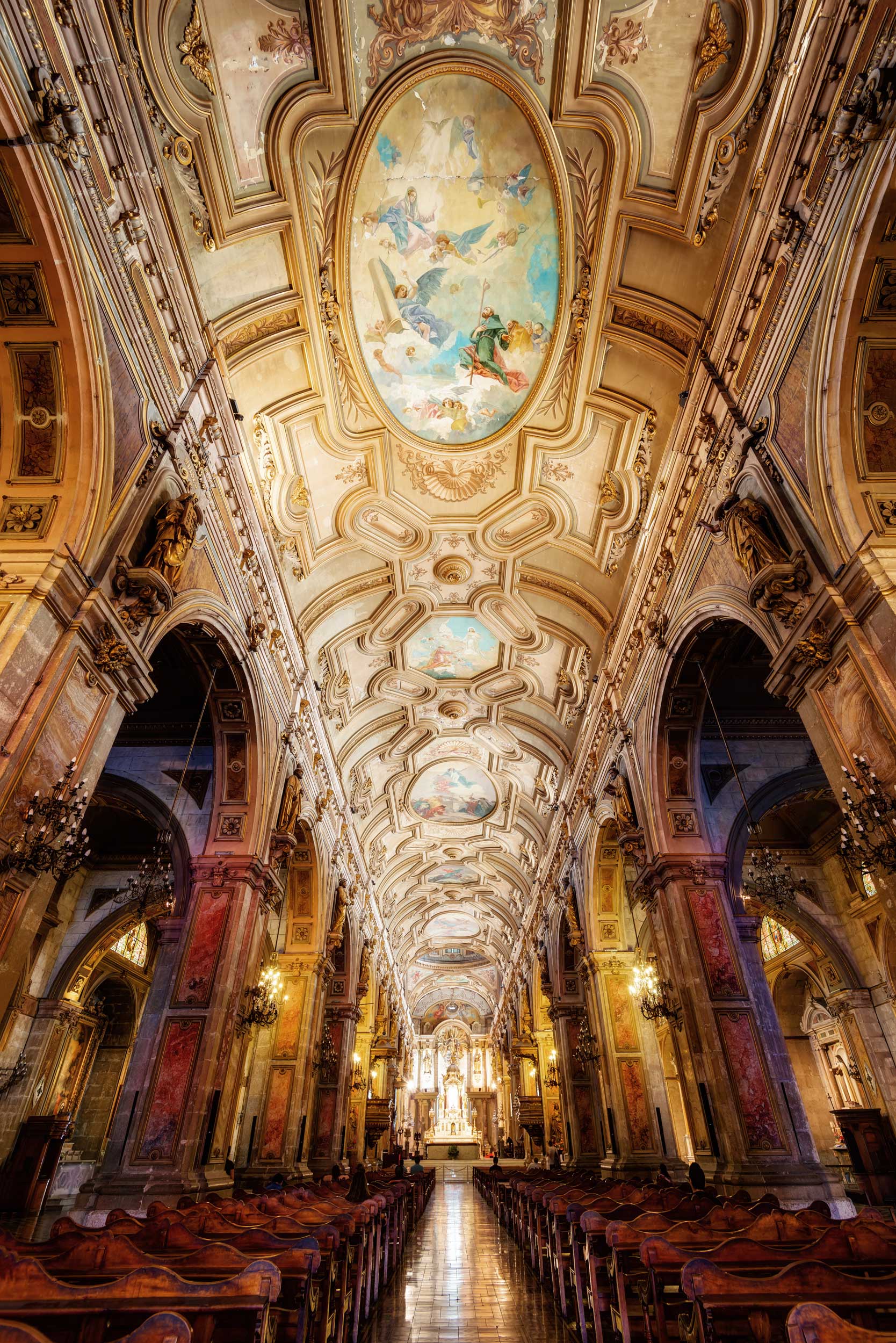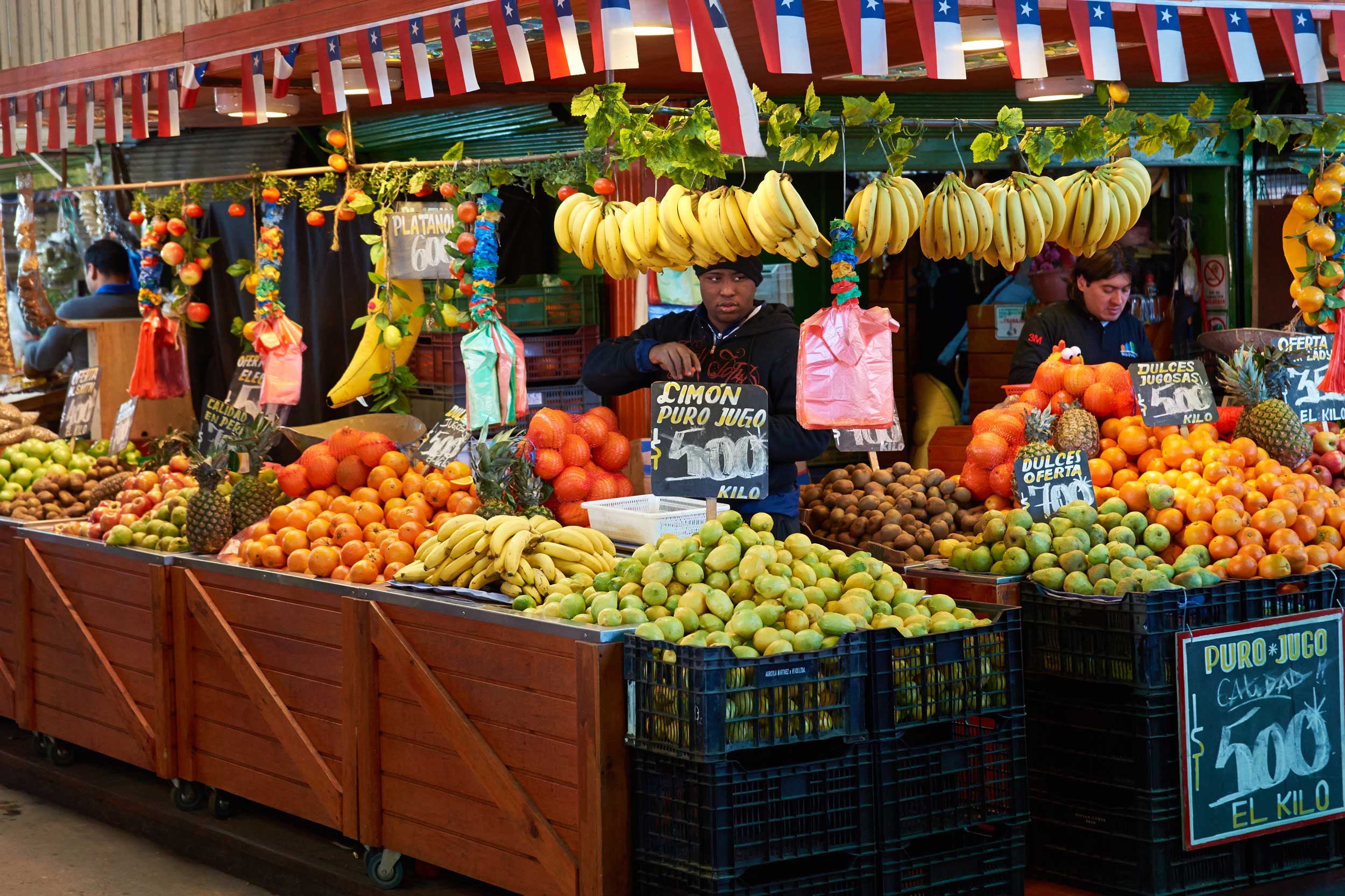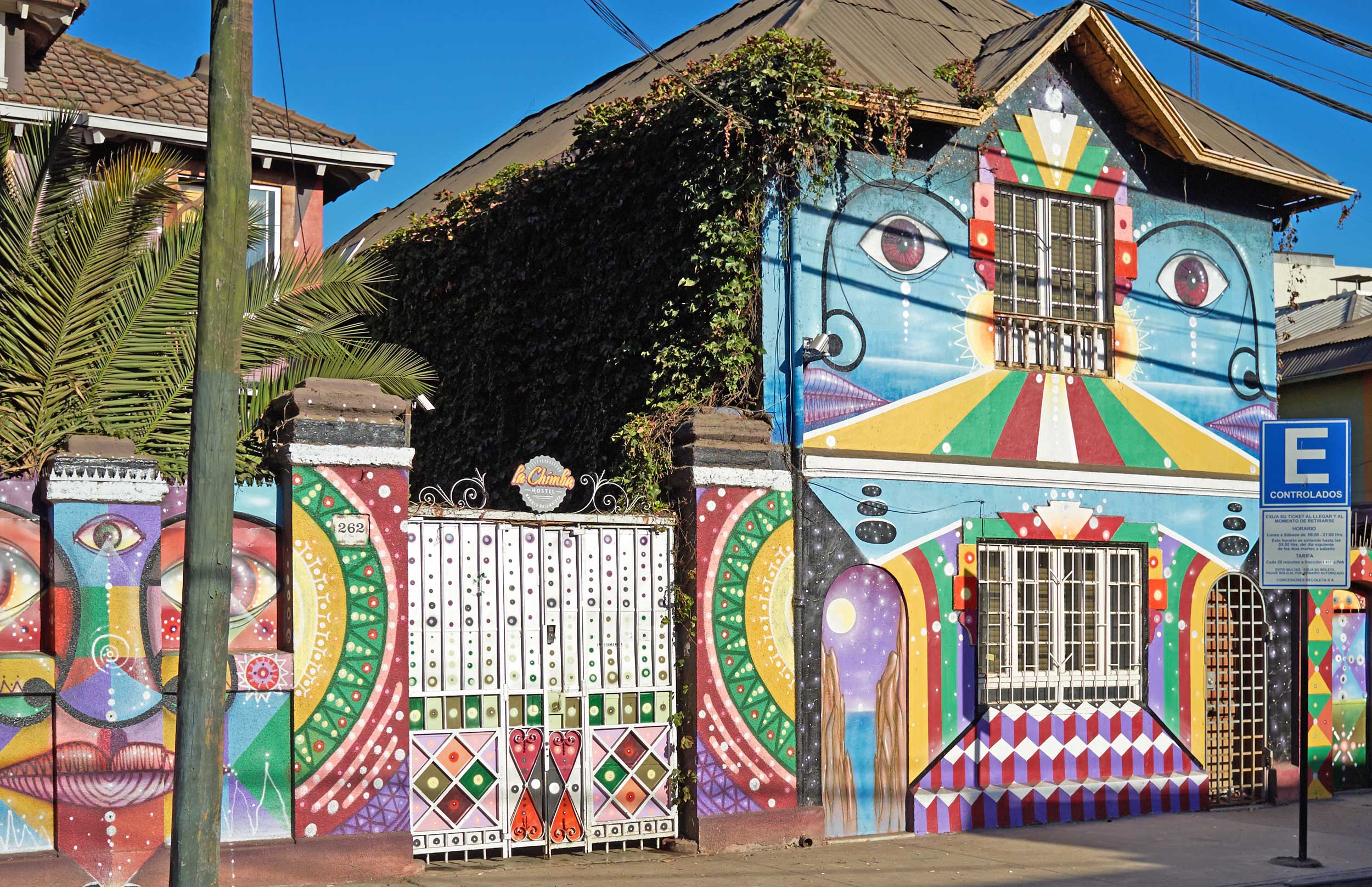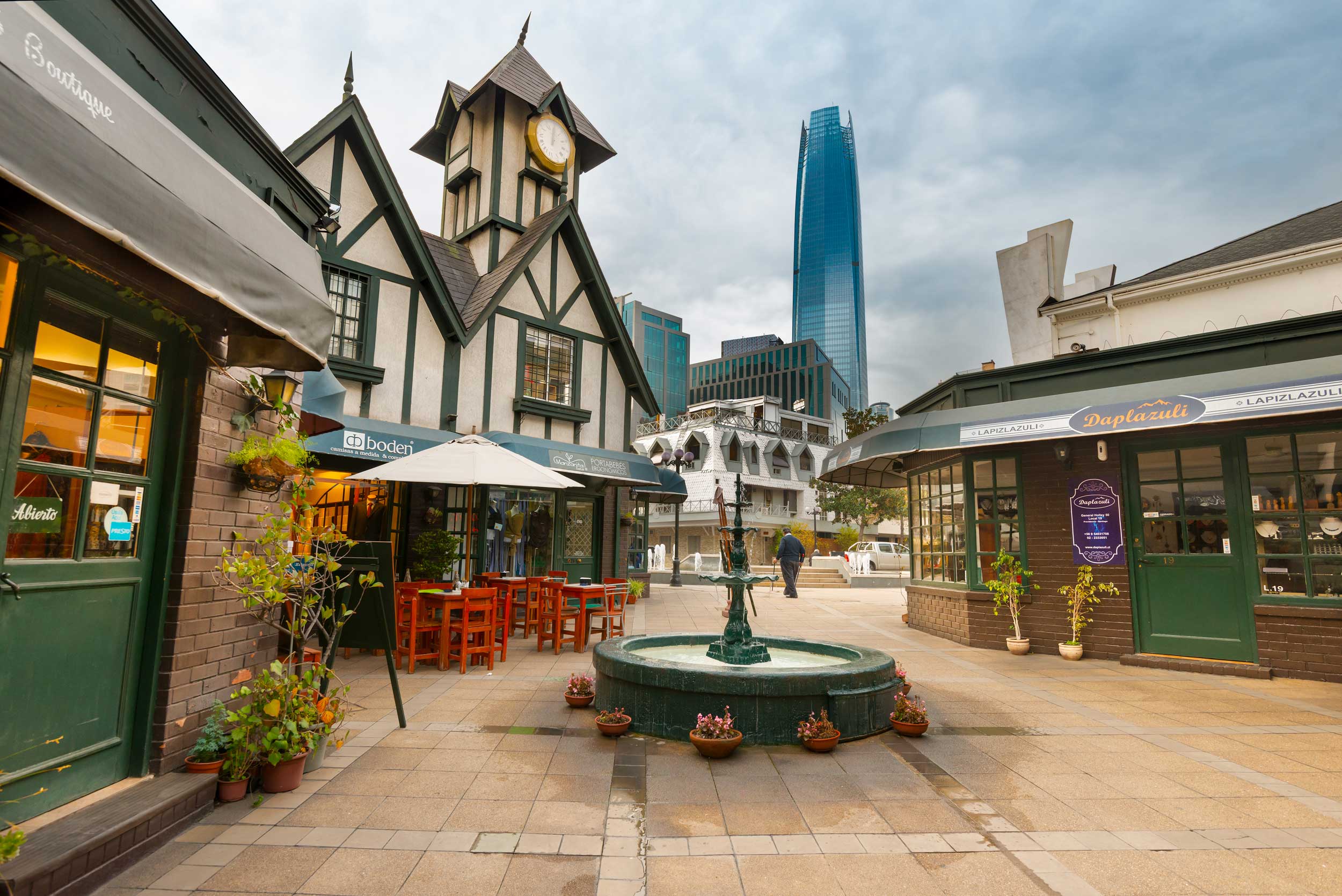48 Hours in Santiago
At first glance, Chile’s capital Santiago appears as an urban jungle, all sleek high-rises, air-conditioned malls and tooting car horns beneath the watchful gaze of the Andes mountains. Move away from the modern suburbs to the east, and one will find life a little more colourful, with neoclassical architecture, a growing food scene and an astonishing array of independent designers to rival the big-name cities.

In 1541, Pedro de Valdivia made his way south to Santiago from Peru with a band of 150 soldiers and his mistress, Ines de Suarez. They formed a base in today’s Plaza de Armas alongside local indigenous groups (including visiting Inca), and spent the early years of colonisation in constant battle with the tribes collectively known as the Mapuche. The city today is a metropolis of some seven million people, spreading out in all directions including into the pre-cordillera. Although many people dash through Santiago en route to one of Chile’s more lustrous gems (such as Patagonia or the Atacama desert), there is more than enough in the capital to keep a visitor entertained. Those on a longer stay can make day trips to the wine-growing valleys of Colchagua, Casablanca or Maipo, the Charles Darwin-traversed grove of La Campana National Park, the UNESCO heritage city of Valparaiso, or the striking Maipo Canyon. The following is a possible itinerary for visitors looking to get an authentic experience in a short amount of time.
Day One

Morning
To get a real feel for the city, begin the day in its historic centre, a chaotic tangle of historic buildings, garish bargain stores and tight throngs of people. Start at the presidential palace of La Moneda (open: Monday-Friday, by pre-reservation only: visitasguiadas.presidencia.cl) site of the nation’s 1973 coup d’etat and now a UNESCO world heritage site with pre-booked tours open to the public. From here, head to the Plaza de Armas (central square), where it’s possible to enter the Metropolitan Cathedral, which dates back to 1748 (open Monday-Sunday; last mass at 19:00, entry is free). Nearby is the Pre-Columbian Art Museum (CLP$6000 entry; hours: 10:00-18:00, closed Monday) which houses a staggering display of relics from the region including textiles, pottery and some of the world’s oldest mummies.

Next have a wander through the cobbled streets of Barrio Lastarria, an excellent spot to pause for coffee and cake (or ice cream). For a more substantial break head to Boca Nariz Wine Bar; there are more than 30 wines to try by the glass here, most notably Chile’s red varietal. Try their food and wine pairing meal. Prices start at around CLP$12,000 for a main course, reservations recommended.
Right beside Barrio Lastarria is the Barrio Bellas Artes, easily recognisable by the Museo Bellas Artes, a contemporary art museum, which opened in 1880 and was the first of its kind in Latin America (closed Mondays; hours: 10:00-18:45; entry is free).
Afternoon
If seeing a lively seafood market appeals, then the Mercado Central (open daily from 6:00am; no charge to enter) makes a worthwhile stop to see the mountains of shellfish and fresh fish that Chile hauls in daily, drawn to the coastlines of Chile thanks to the Humboldt Current. Across the Mapocho River is the La Vega market, the largest indoor market in Chile, and the metaphorical heart of Santiago. Keep an eye out for favourite local ingredients such as cherimoya (custard apple), papaya, goat cheese, queso fresco (fresh cheese), and cochayuyo seaweed. Visitors to the market can try Chilean specialties such as pastel de choclo (corn pie) alongside the locals (average set menu: CLP$5000).

Looming large over the city is San Cristobal hill, which is recognised by its statue of the Virgin Mary, blessed by HH John Paul II when he visited Santiago in 1987. The hill is accessible either by a steep funicular train (open 10:00 – 19:45; closed one Monday a month; price CLP$1500 one-way), on foot or via cable car (closed Monday; one way CP$1310; hours: 10:00 – 20:00). In summer, fantastically-blue swimming pools are open to the public; try Antilen for the best photo opportunities (CLP$7.500; closed Monday; hours: 10:00 – 18:00). For a quintessential Santiago experience, enjoy the views with a mote con huesillo (available at the top, CLP$400), a slightly bitter and slightly sweet drink containing a dried peach and husked wheat.
End the day in Bellavista, a funky bohemian neighbourhood that houses the former residence of Nobel Prize-winning poet, Pablo Neruda, now an eclectic museum and tribute to his life named La Chascona (closed Monday; hours 10:00 – 19:00; CLP$7000). This small area bursts with colourful houses, designer stores, street art-clad walls, and plenty of dining options such as the bustling Patio Bellavista, a favourite of tourists and locals alike. Bellavista is also the place to go to for nightlife. Stop at one of the numerous bars and nightclubs reaching out from its busiest stretch, Pio Nono, and try Chile’s tipple of choice, pisco sour, a brandy made from grapes and lemon. A meal at Peumayen should not be bypassed, a one-of-a-kind culinary experience that fuses traditional ingredients from across Chile with modern palettes in mind. Recommended dish: goat kid shoulder (espadilla de cabrito). Reservations recommended. High-end with mains prices starting at CLP$12,000.

Day Two
Morning
Chile’s traumatic history is still very fresh in the memory of residents, and this intricate entanglement can be explored in further detail at the Human Rights Museum, a colossal and extremely informative exhibition that tackles this sensitive topic with grace. The museum’s location at the edge of the Quinta Normal park makes it a good jumping off spot to visit the other museums in the area, including the Natural History Museum, the Artequin Museum and the Railway Museum. From here wander down the quiet corners of Barrio Concha y Toro to the well-regarded restaurant Zully, with themed dining rooms located in the former home of the poet, Vicente Huidobro. Try the house special: boar loin with cabernet sauce (lomo de jabali). High-end, average main price is CLP$10,000. Reservations recommended.
Afternoon
Change up the pace with a visit to Providencia, an up-market and modern neighbourhood full of shops and cafes. Rising high above the sprawling Costanera Centre mall is Sky Costanera, the tallest building in Latin America with an observation deck that towers 300 metres above the ground.

Finish the day browsing around Barrio Italia, a gorgeous enclave of fairy lights, prayer flags and small stores selling organic food, design wares and one-off designs. Wander down its main thoroughfare, Avenida Italia, to find that unique something to take back home, perhaps a wildlife-inspired item from 7 Colores, funky leggings from La Pituka, or bean-to-bar chocolate from the Obolo chocolate store (they make it on site). While there are multiple restaurants and cafes to choose from in this area, the foraged food on offer from Silvestre Bistro is pretty hard to beat. The menu changes daily and prices are reasonable: average main CLP$8000. Reservations are recommended. This neighbourhood also offers an excellent selection of cake shops, including Pasteleria Lala Leelu (closed: Sunday, Monday, Tuesday) and quality vegan fare (try Vegan Bunker, average main CLP$5000).
Who This is For
Santiago is a city that will appeal to many tastes, being relatively safe, modern and organised with a comprehensive metro and easily-accessible taxis. That said, visitors should take care of their belongings and be mindful of their surroundings — particularly around the downtown area
When to Go
Santiago is a city that doesn’t see much rainfall, but when it does rain, many neighborhoods suffer from inadequate drainage. And, while the summers are hot, with temperatures averaging around 25 degrees Celsius, the benefit of visiting during this season is that the city is virtually empty of residents who instead converge en masse on the coast.
Where to Stay
The Aubrey was Santiago’s first boutique hotel, perfectly placed within the Bellavista neighbourhood and a stone’s throw from its restaurants and bars. There are 15 beautifully-decorated rooms with either a balcony or patio, along with an internal terrace. There’s also a heated pool, jacuzzi, solarium, free wifi and parking, massage, and a dedicated piano lounge (piano recitals take place each Friday from 17:00 – 23:00). Double rooms start at US$252 a night.
ESSENTIAL INFORMATION
- The local currency is the Chilean Peso; for best rates, it’s best to change money outside of the airport; not all establishments accept credit cards so check beforehand.
- The airport issues a paper Tourist Card on arrival which must be presented on departure. If this is lost, a trip to the nearest PDI (police) is necessary to have a replacement issued.
- Uber — while used by many locals — is still technically illegal in Chile, and visitors may encounter problems using it for transfers to and from the airport. Proceed with caution, or book a private or shared taxi from the official TransVIP taxi stand inside the arrivals hall. A private taxi from the airport should cost around CLP$25,000.
- A Bip! card is required to use the metro system. Cards can be bought and recharged either in the metro station or at any recharge center.
- Cycling is having ‘a moment’ in Santiago, and bike lanes and bike rental systems can be found across the city. Tourists can take a cycling tour or simply rent a bike with companies such as La Bicicleta Verde.
- English isn’t widely spoken in Santiago, and Chilean Spanish takes some getting used to. Take a browse through the book How To Survive in the Chilean Jungle to come to grips with local slang.
USEFUL LINKS
https://www.cascada.travel/
https://cachandochile.wordpress.com/
https://www.amazon.com/Survive-Chilean-Jungle-Alvaro-Taboada/dp/9567802386
https://www.transvip.cl/
Author bio: Helen Cordery is a freelance writer and guidebook author who has been based in Chile for the past five years. She chronicles her adventures raising a family in Santiago on her blog, which can be found at https://queridarecoleta.com/.
Booking.com
